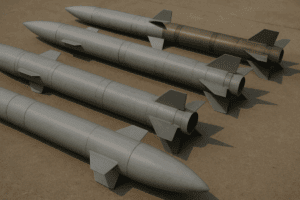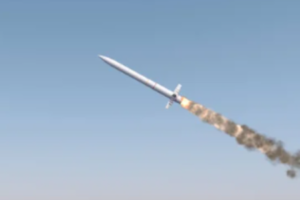President Joe Biden has signed the Fiscal 2023 National Defence Authorisation Act into law allotting $816.7 billion to the Defence Department.
The act means a 4.6 percent pay raise for military and civilian members of the department, and includes $45 billion more than originally requested to counter the effects of inflation and to accelerate implementation of the National Defence Strategy.
The act also authorizes $30.3 billion for national security programs in the Department of Energy and the Defence Nuclear Facilities Safety Board and $378 million for other defence-related activities.
Although inflation has been dropping, the act authorizes $12.6 billion for inflation impacts on purchases. It also funds $3.8 billion more to account for inflation in military construction. It is a testament to the size of the agency that the act authorizes $2.5 billion for inflation impacts on DOD fuel purchases.
One of the more contentious items in the act is requiring the defence secretary to rescind the mandate that members of the armed forces be vaccinated against COVID-19. “The department will fully comply with the law,” DOD officials said. “DOD remains committed to the health and safety of the force and to ensuring we are ready to execute our mission at all times.”
Secretary of Defence Lloyd J. Austin III ordered the mandate on August 24, 2021. The COVID-19 vaccinations have been successful. Some 98 percent of active duty service members and 96 percent of the total force have been vaccinated. Since April, only two service members have died from COVID-19.
Austin argued that the mandate is necessary to protect military readiness, and he has been clear in his support for maintaining it. Still, Congress has spoken and the department will fully comply with the NDAA, officials said.
On the personnel side, the act authorizes additional funding to address the effects of inflation on compensation. It also puts in place language allowing more service members to qualify for the basic needs allowance by increasing the eligibility threshold and allowance size from 130 percent of the federal poverty line to 150%. The act authorizes the defence secretary to increase this benefit to 200% of the poverty line when appropriate.
The act increases bonuses and special pay for service members in qualifying career fields. The act also looks to give recruiters a tool to revive and extend temporary authority for targeted recruitment incentives.
DOD officials have said that roughly one-third of spouses must obtain new professional licenses every time they move to a new state. The act expands the scope of financial reimbursement related to spouse relicensing and business costs arising from a permanent change of station.
The act also calls for a pilot program to reimburse military families for certain child care costs related to a permanent change of station.
There are several changes in the act regarding housing. The act extends the authority to adjust the basic allowance for housing in high-cost areas. It encourages DOD to coordinate efforts to address housing shortages. The act also makes the assistant secretary of defence for energy, installations and environment the department’s chief housing officer.
There were no surprises on active duty end strength with the Army set at 452,000; the Navy at 354,000; the Air Force at 325,344; the Marine Corps set at 177,000 and the Space Force at 8,600.
Other aspects of the act include the authorization of special duty pay for members based on cold weather climate conditions in which their duties are performed. The act also starts a program to reimburse Alaska-based service members for the cost of airfare to travel to their homes of record.
The NDAA authorizes $32.6 billion for Navy shipbuilding, an increase of $4.7 billion. This will fund 11 battle force ships including three Arleigh Burke-class destroyers; two Virginia-class submarines; two expeditionary fast transports; one Constellation-class frigate; one San Antonio-class amphibious ship; one John Lewis-class oiler and one Navajo-class towing, salvage and rescue ship.
The act also calls for the Navy to build a third Arleigh Burke-class destroyer and allocates $2.2 billion to the effort.
The act funds eight F-18E/F aircraft, 16 F-35C aircraft, 15 F-35B jets and 12 CH-53K helicopters. The legislation also authorizes two more V-22 Osprey aircraft, seven E-2D Hawkeye aircraft and five KC-130J tanker aircraft. The act funds several unmanned aerial platforms including the Triton and Stingray systems.
The act authorizes the full fiscal year 2023 budget request for the European Deterrence Initiative and extends and modifies the Ukraine Security Assistance Initiative. It authorizes $800 million in fiscal year 2023, an increase of $500 million above the initial budget request.
Media Contact
Editor, Defence Buyer
Tel: +44 (0) 1622 823 922
Email: editor@defencebuyer.com





